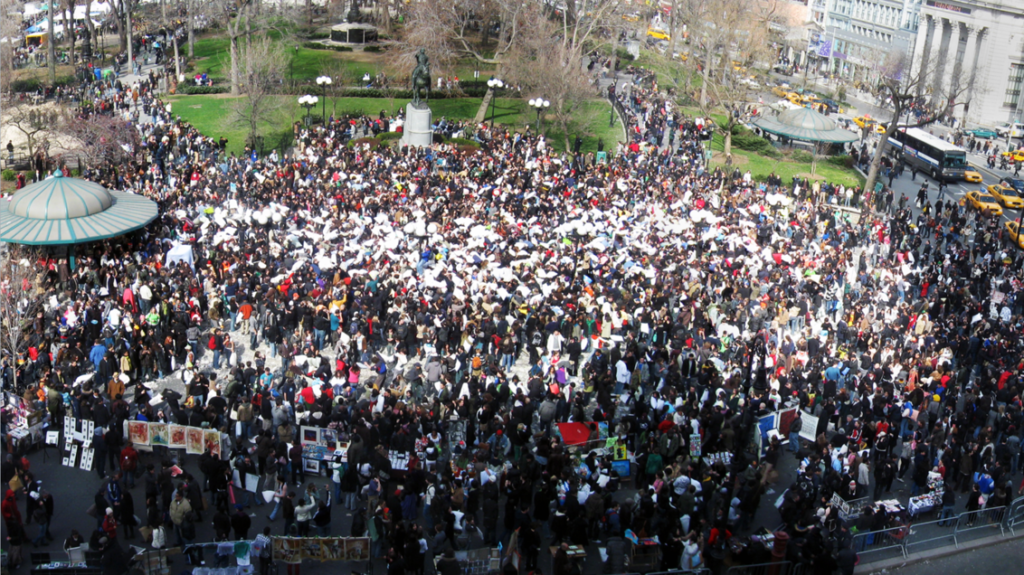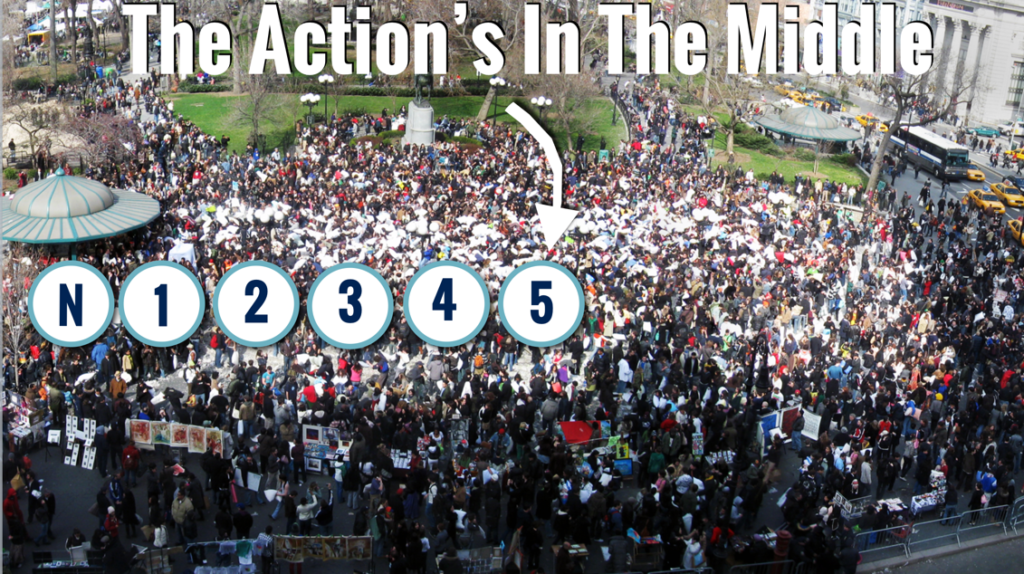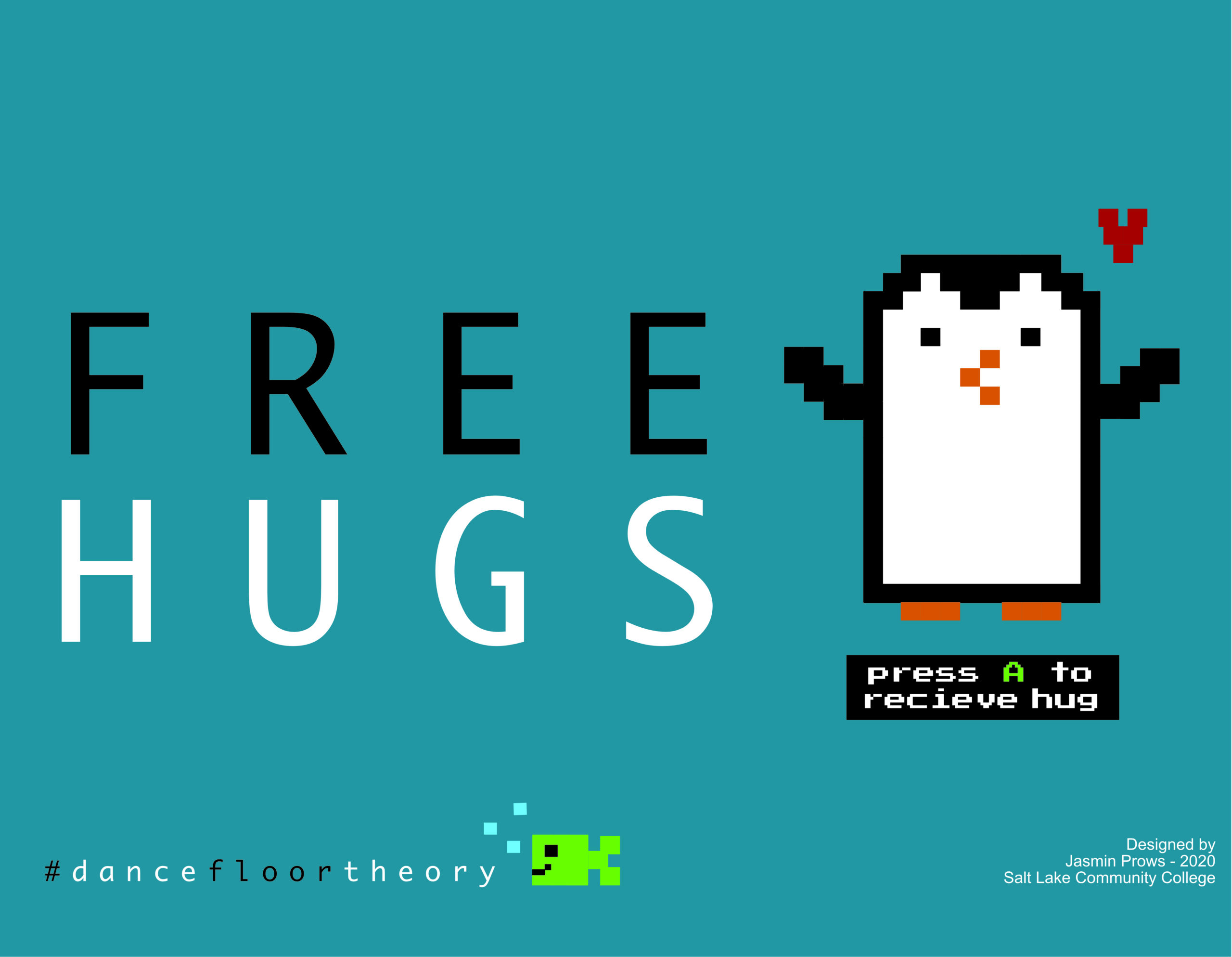On his way to work on a dreary Monday morning, my friend got a text message that read:
“On Saturday, meet at Union Sq in NYC with a pillow in a black plastic bag, when the clock hits 3pm, pull out your pillow and begin pillow fighting.”
My friend didn’t know how many other people had signed up for the random events being hosted by a group called Improv Everywhere, nor did he know how many were actually going to show up to the pillow fight. After a week of contemplation, he and his girlfriend grabbed their pillows and headed to Union Square in NYC.
This is what Union Square looked like right before the pillow fight.

This is what Union Square looked like during the pillow fight.

5,000 people showed up for the pillow fight in NYC! And it looks just like a 5,000 person dance floor with the most engaged “dancers” in the middle and the least engaged “dancers” on the edge.
This brings us to the second lesson of Dance Floor Theory.

DFT Lesson #2 states that within any group, the most engaged users tend to be in the middle. If I could take all of you to the VIP section of a dance floor and you looked down over the crowd, you’d see that the most engaged dancers are in the center. In other words, the action is in the middle. Another way to say this is that the more connected someone is to the network, the more engaged they are.
Taking the concept of social connections away from a pillow fight, off the dance floor, and into the work environment, a study of 212 employees found that social connections at work could be used as a predictor of learning behavior and self-driven knowledge growth. The more an employee is socially connected to other employees, the higher their engagement, effort, and retention. An employee’s odds of success are linked to their social connections. In other words, an employee’s odds of work success are linked to their social connections.
In Nicholas Christakis’ book, Connected*, he talks a lot about how centrality of a person to the center of a network impacts everything from financial gain to overall happiness. The opposite is also true as the people on the edge of a network, with few connections, are worse off.
“Unhappy people cluster with unhappy people in the network, and happy people cluster with happy people. Unhappy people seem more peripheral: they are much more likely to appear at the end of a chain of social relationships or at the edge of the network” – Nicholas Christakis
The dangers of disconnection are extreme and expansive. The Conference Board reports that 53% of American workers are unhappy at work. The danger of being on the edge of a network, is anything from decreased productivity, lower job satisfaction, to even taking more sick days.
Knowing how valuable employee connections can be? What are you doing to increase the connections within your team and/or organization?



